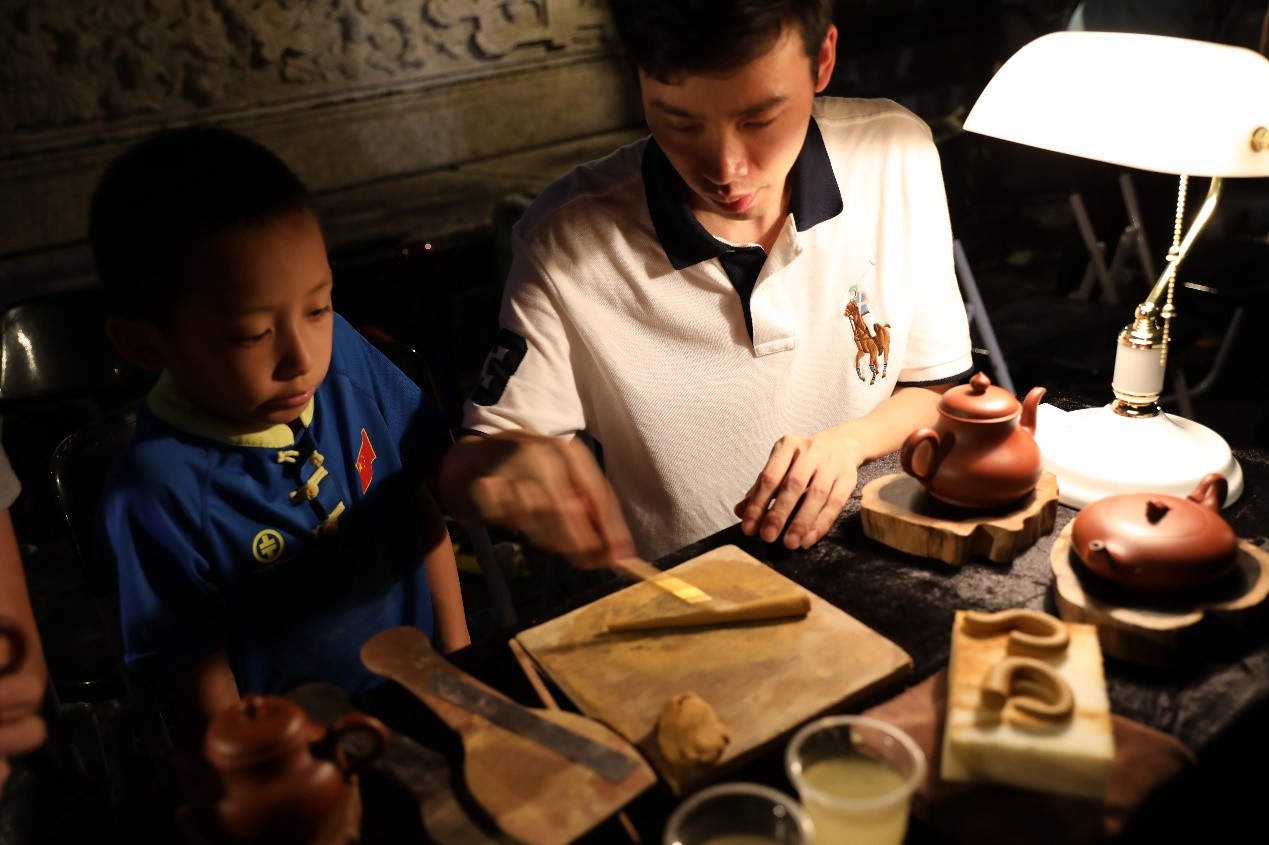
Rao Baolian (Front, left), a traditional Chinese paper-cutting inheritor, shows her work with a group of students in Zhuhai City, Guangdong Province, May 31, 2019.
Themed “South China Historical Trail, New Maritime Silk Road", the national media tour of ancient post roads kicked off in Zhuhai city, South China's Guangdong province on May 31, attracting reporters from nearly 100 media organizations across the country.
The event, jointly organized by China Photojournalists Society and local authorities, aims to explore the charm and showcase the protection, revitalization and utilization of the ancient post roads.
Originating in the Qin and Han Dynasties, the South China Historical Trails have a history of more than 2200 years. Initially built to transfer documents, transport supplies, as well as conduct people-to-people exchanges, the roads served as important channels for economic exchange and cultural communication. They are considered a witness of the historical development of Guangdong province.

The “South China Historical Trail, New Maritime Silk Road" national media tour kicks off in Zhuhai city, South China's Guangdong Province, May 31, 2019.
Chinese President Xi Jinping has always attached great importance to the protection of historical and cultural heritage. In 2016, the State Council proposed better protection for the nation's cultural relics and stronger law enforcement by means of documentation.
In the same year, Guangdong officially launched the protection and utilization work of the South China Historical Trails. The work also helped boost rural revitalization and poverty alleviation. After more than three years’ effort, nearly 300 kilometers’ ancient post roads were restored while also effectively improved the economic development and people’s living environment. The demonstration sections and key routes revitalized have become perfect places for people to experience nature, culture and history.

Liang Xiuling, a Guangdong embroidery inheritor, shows a man the skills needed to make embroidery in Zhuhai city in South China's Guangdong Province, May 31, 2019.
Zhang Yisheng, vice mayor of Zhuhai city, pointed out at the opening ceremony that the ancient trails in Zhuhai belong to Xiangshan Ancient Post Road, which is the earliest passage to Western civilizations and was the main passage for ancient South Guangdong to connect with the "Maritime Silk Road".
“The revitalization of ancient trails has driven development along the routes, thus it will increase a sense of gain and happiness of local residents”, he added.

Zhou Hanjun, an olive-stone carving inheritor, carves an olive-stone in Zhuhai city in South China's Guangdong Province, May 31, 2019.
A group of Chinese craft inheritors and folk music performers from Guangdong shared their contributions at the opening ceremony, showcasing superb skills including paper-cutting, embroidery, lantern making, Pipa playing and more.

Xie Siyi (right), a Chaozhou hand-shank red clay pot inheritor, shows a child how to make a clay pot in Zhuhai city in South China's Guangdong Province, May 31, 2019.

Luo Jianquan, a duan ink-slab inheritor, showcases how to make the ink-slab to visitors in Zhuhai city in South China's Guangdong Province, May 31, 2019.

A man from Kazakstan studying in China makes a ceramic bust in Zhuhai city in South China's Guangdong Province, May 31, 2019. He is instructed by Shiwan ceramic statue inheritor Feng Weimin.

Yang Yurong, a Foshan Lantern inheritor, teachers a girl to make lanterns in Zhuhai city in South China's Guangdong Province, May 31, 2019. He is guided by the Shiwan ceramic statue inheritor Feng Weimin.
